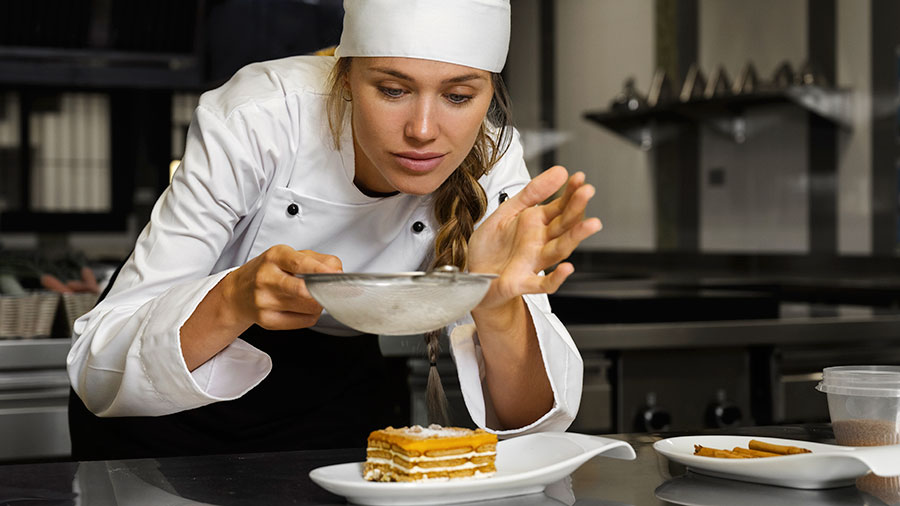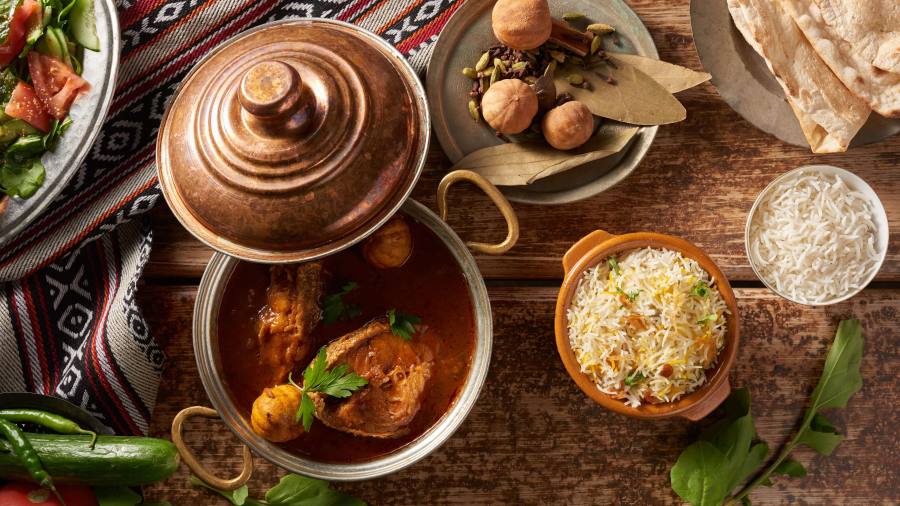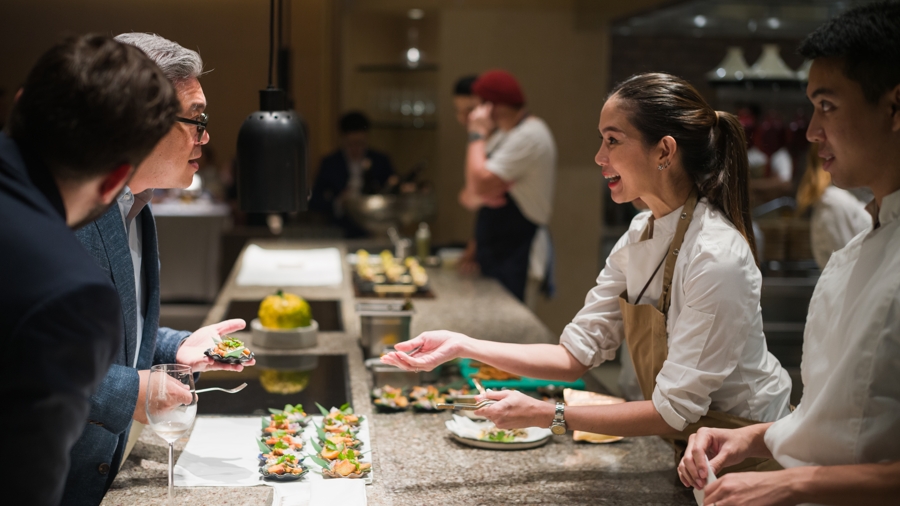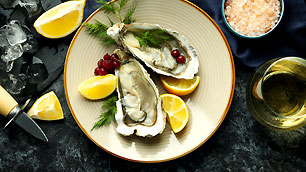Authentic Thai
Green Curry - Gaeng Keow Wan
Thai Chef Mai introduces, Gaeng Keow Wan, or green curry, is a Thai culinary masterpiece that delights the senses with its perfect balance of spicy, sweet, and savory notes. This aromatic dish is instantly recognizable by its brilliant green color, which comes from the fresh green chilis and herbs used in its preparation. Join us as we explore the intricacies of this iconic Thai curry and learn to recreate its magic in your own kitchen.
Chef's Notes:
- Green curry is a beloved Thai dish celebrated for its vibrant green color and complex, spicy-sweet flavor profile
- The curry's unique taste is derived from a blend of fresh green chilis, aromatic herbs, and spices like lemongrass and galangal
- While traditionally prepared with chicken or seafood, green curry is versatile and can be adapted to various proteins and vegetables
What is Green Curry?
Green curry stands as one of Thailand's most iconic culinary exports. Its Thai name, Gaeng Keow Wan, loosely translates to "sweet green curry," though the sweetness is more of a subtle undertone. The curry's striking green hue is derived from the abundance of fresh green chilis used in the curry paste, which forms the foundation of this exquisite dish.
At its essence, green curry consists of a fragrant, spice-laden paste simmered in rich coconut milk to create a luscious, creamy sauce. This flavorful base then becomes the perfect medium for cooking tender pieces of meat, traditionally chicken or fish, along with an assortment of vegetables such as Thai eggplant and crisp bamboo shoots. The end result is a symphony of flavors and textures that captivates the palate.
The Heart of Green Curry: The Paste
The soul of an exceptional green curry lies in its meticulously crafted paste. While pre-made pastes offer convenience, nothing can rival the intoxicating aroma and depth of flavor found in a homemade version. Here are the key ingredients that go into a traditional green curry paste:
- Fresh green chilis (preferably Thai bird's eye chilis)
- Aromatic lemongrass
- Pungent galangal
- Fragrant makrut lime zest and leaves
- Sweet shallots
- Pungent garlic cloves
- Flavorful coriander roots
- Earthy cumin seeds
- Spicy white peppercorns
- Umami-rich shrimp paste (kapi)
These ingredients are traditionally ground together using a mortar and pestle until they form a smooth, aromatic paste. While time-consuming, this process is crucial for extracting maximum flavor from each component, resulting in a curry paste that's truly extraordinary.
Crafting the Perfect Green Curry
Now that we've explored the essential components, let's dive into the process of creating this delectable dish in your own kitchen.
Ingredients:
- 2 tablespoons homemade or high-quality store-bought green curry paste
- 1 can (14 oz) full-fat coconut milk
- 1 lb boneless, skinless chicken thighs, cut into bite-sized chunks
- 2 small Thai eggplants, quartered
- 1/2 cup tender bamboo shoots
- 2 tablespoons savory fish sauce
- 1 tablespoon palm sugar (or brown sugar)
- 4 fresh makrut lime leaves
- 1 cup fragrant Thai basil leaves
- 2 red bird's eye chilis, thinly sliced (for garnish)
Instructions:
1. In a large wok or deep skillet, heat a few tablespoons of the thick coconut cream over medium heat.
2. Add the green curry paste and stir-fry until it becomes fragrant and the oil begins to separate, about 2-3 minutes.
3. Gradually pour in the remaining coconut milk, stirring constantly to combine, and bring the mixture to a gentle simmer.
4. Add the chicken pieces and cook for 6-8 minutes, stirring occasionally to ensure even cooking.
5. Introduce the eggplant and bamboo shoots, then continue to simmer for another 5-6 minutes until the vegetables are tender.
6. Season the curry with fish sauce and palm sugar, tasting and adjusting as needed for a perfect balance of flavors.
7. Tear the makrut lime leaves and add them to the curry, allowing it to simmer for 2-3 more minutes to infuse their citrusy aroma.
8. Remove the curry from heat and gently fold in the fresh Thai basil leaves.
9. Serve the curry piping hot over a bed of fragrant jasmine rice, garnished with a sprinkle of sliced red chilis.
The secret to an outstanding green curry lies in achieving the perfect balance of flavors. The heat from the chilis should be present but not overpowering, allowing the other aromatic components to shine through. The coconut milk provides a luxurious, creamy base, while the fish sauce adds depth and umami. A touch of palm sugar rounds out the flavors with a subtle sweetness that ties everything together.
Variations and Adaptations
While chicken is a classic choice for green curry, don't hesitate to experiment with other proteins. Succulent shrimp, flaky white fish, tender beef, or even crispy tofu can all be delicious alternatives. For a vegetarian version, load up on an array of colorful vegetables like crisp bell peppers, tender zucchini, and meaty mushrooms.
One of the most appealing aspects of green curry is its versatility. Feel free to adjust the spice level to suit your palate by adding more or less curry paste. You can also play with different vegetable combinations based on personal preferences or seasonal availability, making each batch of curry a unique culinary adventure.
Serving Suggestions
Traditionally, green curry is served alongside a mound of fragrant jasmine rice, which acts as the perfect canvas for soaking up the flavorful sauce. For an even more indulgent meal, try pairing it with roti, a flaky Thai flatbread that's ideal for scooping up every last bit of curry. A side of cool, crisp cucumber salad can provide a refreshing contrast to the rich, spicy curry.
Nutrition Facts
Nutrient amount per serving
-
- Calories: 465
- Total Fat: 37g
- Saturated Fat: 26g
- Cholesterol: 90mg
- Sodium: 1000mg
- Total Carbohydrate: 17g
- Dietary Fiber: 4g
- Sugar: 6g
- Protein: 27g
Note: These nutrition facts are approximate and based on a serving size of 1 cup of curry with 1/2 cup of jasmine rice. Values may vary depending on specific ingredients and preparation methods.
FAQs
Can I prepare green curry in advance?
Absolutely! In fact, many people find that green curry tastes even better the following day, as the flavors have had time to meld and deepen. Store it in an airtight container in the refrigerator for up to 3 days. When reheating, do so gently on the stovetop, adding a splash of water or coconut milk if needed to adjust the consistency.
Is green curry typically very spicy?
The level of spiciness in green curry can vary depending on the amount and type of chilis used in the curry paste. Generally, green curry is considered moderately spicy, but this can be easily adjusted to suit individual preferences by altering the amount of curry paste used in the dish.
Is it possible to freeze green curry?
Yes, green curry freezes exceptionally well for up to 3 months. Store it in a freezer-safe container, leaving some space at the top to allow for expansion. When ready to enjoy, thaw the curry overnight in the refrigerator before gently reheating on the stovetop.
How does green curry differ from other Thai curries?
The main distinction lies in the composition of the curry paste. Green curry utilizes fresh green chilis and an abundance of herbs, resulting in a brighter, more herbaceous flavor profile compared to red or yellow curries. It's often considered the spiciest of the three main Thai curries.
Can I use a food processor instead of a mortar and pestle for making the curry paste?
While a mortar and pestle is the traditional tool and produces the best texture and flavor extraction, you can certainly use a food processor or high-powered blender to make the paste. You may need to add a small amount of oil to help the ingredients blend smoothly. The result may be slightly different in texture but will still yield a delicious curry.





























 Gastronomy Cities
Gastronomy Cities
 Amazing Food
Amazing Food
 Chef's Talk
Chef's Talk